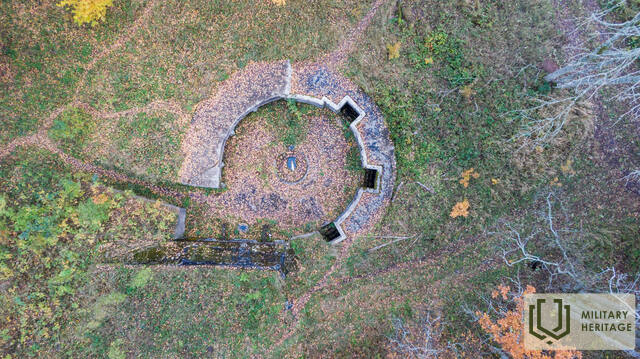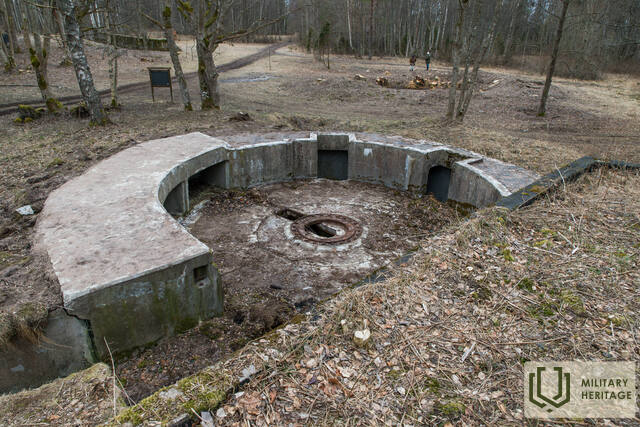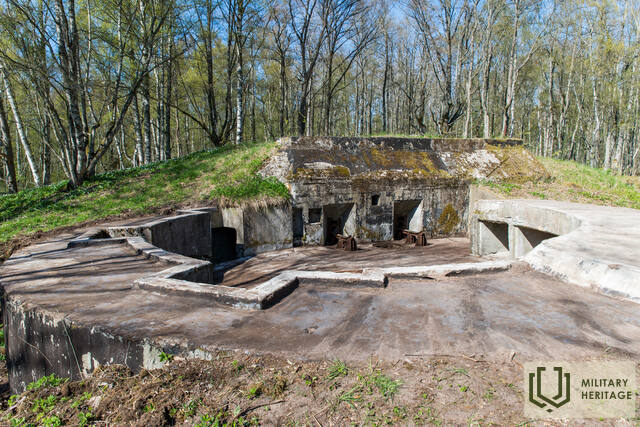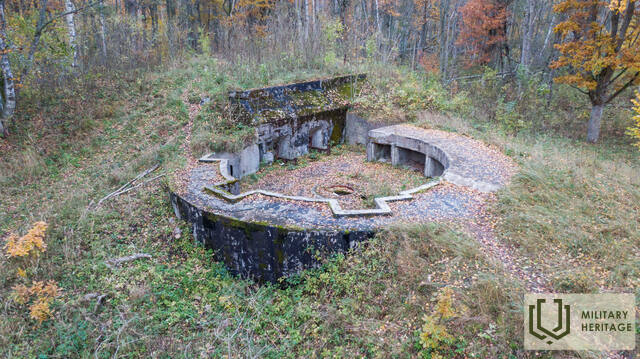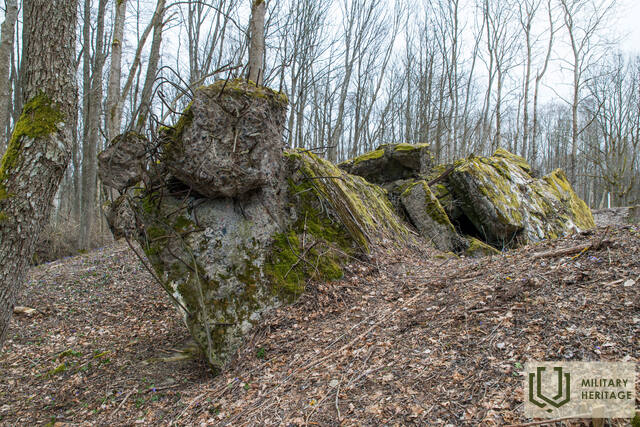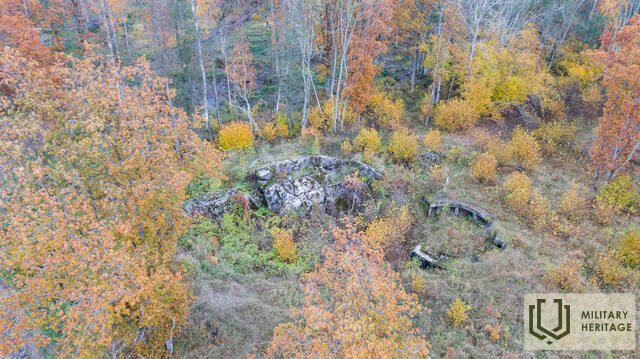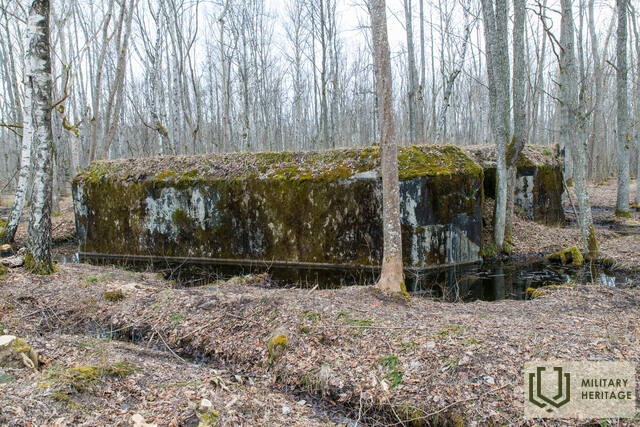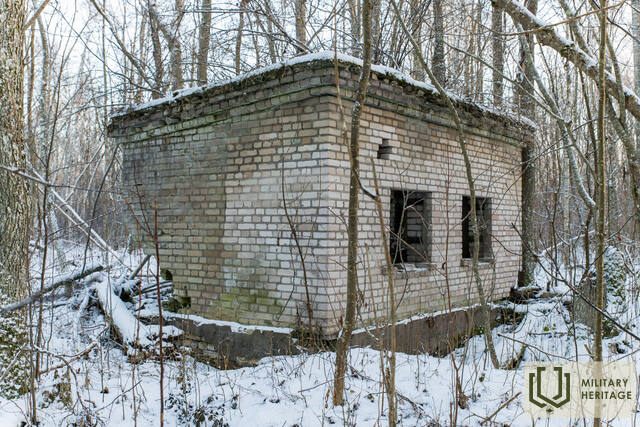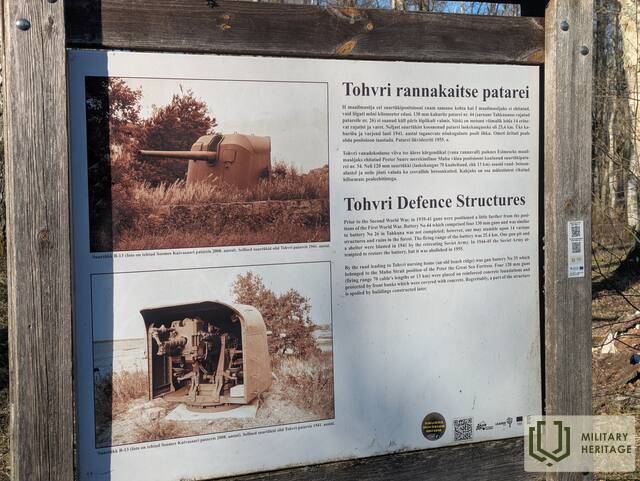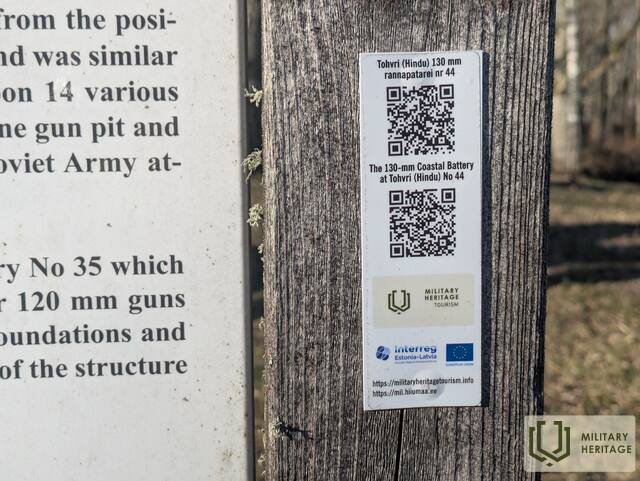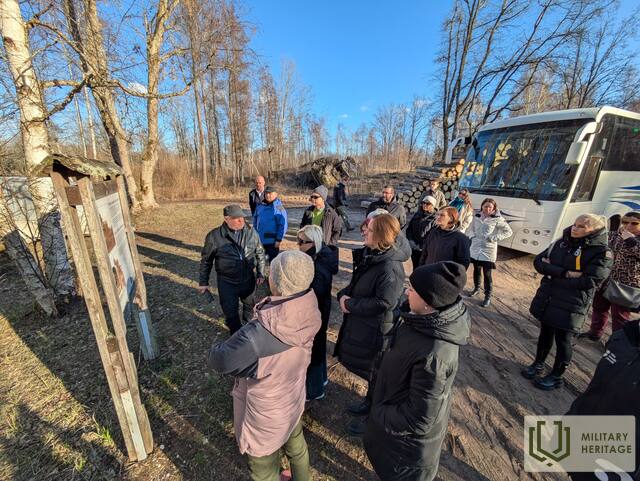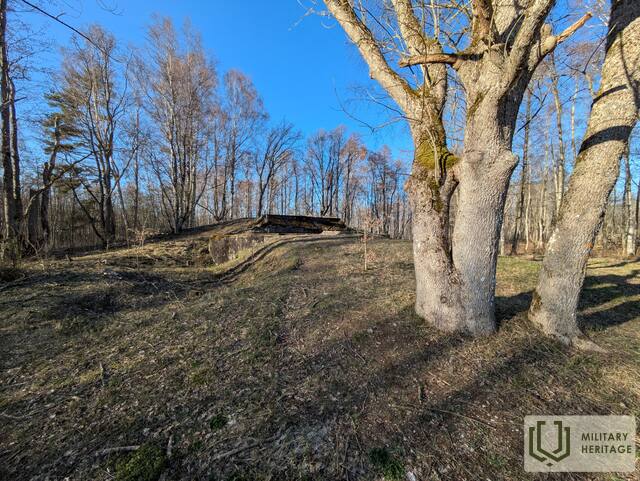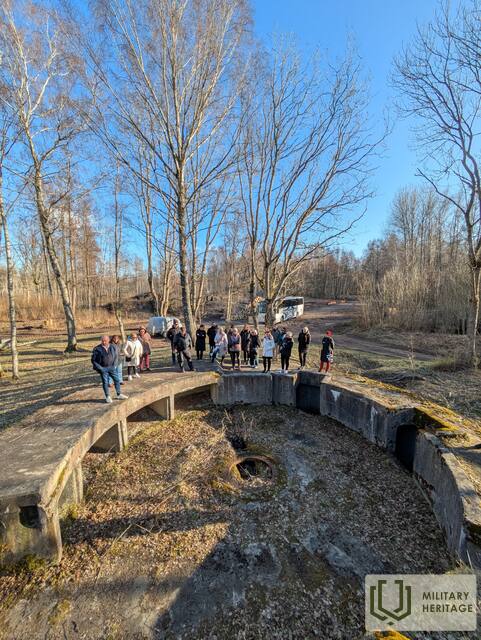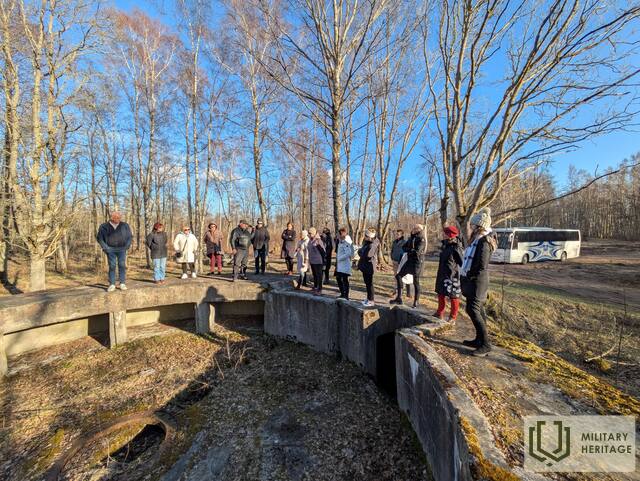130-mm Coastal Battery No 44 at Tohvri (Hindu)
Fortification

A building battalion of the Red Army arrived in Hindu village in October 1939. The local population was ordered to leave their homes before winter. By the following spring the battery area was surrounded by a wire fence. Building material arrived via Sõru Port where work was done in 3 shifts, 24 hours a day. At least a hundred local men were employed to build the battery. Concrete mix was manually made in large tubs, foundation holes were dug. The barracks were going to have two storeys, the second storey angle iron framework was completed when the top committee came to check on the construction. An order was given to demolish the second floor because it was visible from the sea. By the autumn of 1940 two barracks, two officers’ residential buildings, a canteen, two saunas, a food cellar, two firefighting water reservoirs and a gate guard post were completed. A large-scale construction was to continue and there were a couple of thousands of tons of cement in the depots.
The crew of the battery included 5 officers and 125 lower rank soldiers. The test firing of guns took place in summer 1941 when boat-like vessels with masts towed by tugboats on long wire ropes appeared. The battery was never fully completed, some of the shelters and the water reservoir are not covered with earth. The armoured doors were probably never fully installed. Just the concrete floor of the gas shelter (shelter-power station) with its spiky reinforcement iron bars got completed. One gun and its crew were taken to Heltermaa in September 1941. During the German landing in October an ammunition shelter together with the rest of the battery’s ammunition were blown up. The powerful explosion ripped and scattered the walls of the explosive charge room and raised its roof into the air which broke in two after falling on the standing wall.
The other three gun blocks have survived more or less intact and dry. Recently, the area has been cleared and the positions can be fairly easily identified. The command post is half filled with water the whole year round. Due to its wet location the ferroconcrete and bricks are in a notably worse condition than in Tahkuna.
Around the battery there are five machine gun bunkers, each of a different construction. A couple of hundred metres to the Northwest of the battery position there is a small open observation post. There are two machine gun bunkers by the base as well. Near the upper lighthouse of Sõru there are the ruins of a machine gun bunker with a shooting sector of laid bricks. At least 15 such weapon pits were built between Tärkma and Õngu in 1941.
In 1944–1945 the battery was reconstructed with three 130-mm guns. The last training shots were taken on 23.09.1957. The following March the guns were taken away and then the battery was closed down. Today the former base accommodates Tohvri nursing home.
Related timeline
Related stories
Hans-Gotthard Pestke
Knight of the Knight's Cross in the battles for the capture of Hiiumaa




